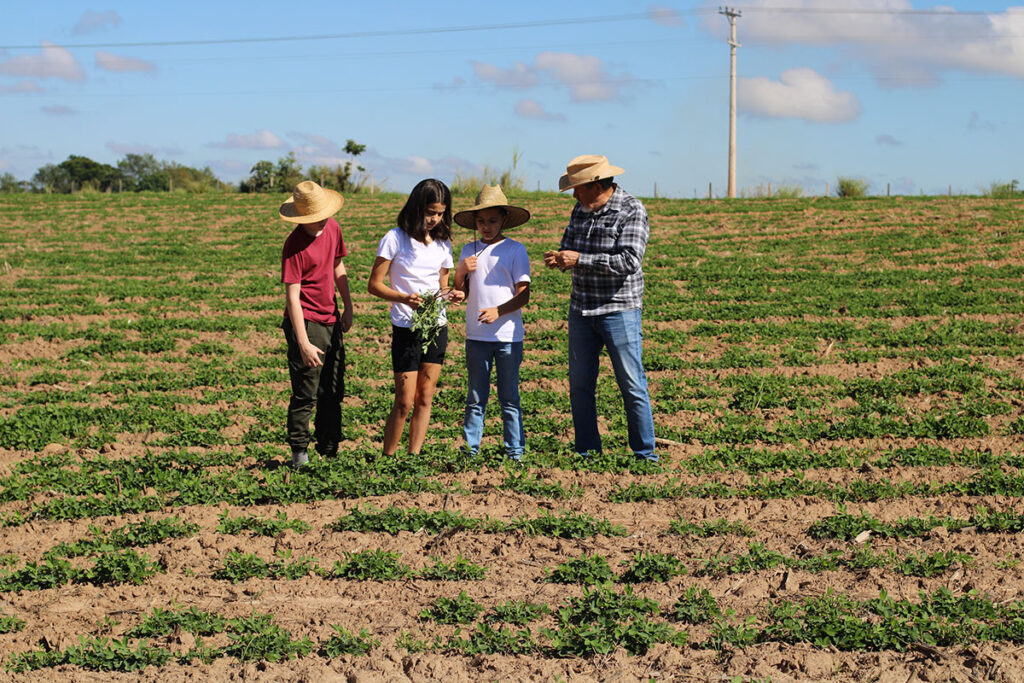This unit begins by engaging students with the phenomenon of food shortages. Students figure out what plants need to grow well and how environmental conditions affect food growth, leading to wonders around food and food shortages. Students investigate who is affected by changes in food availability, with opportunities to share and explore their own food traditions.
These wonders lead to investigation into our food system. Students learn about the people and processes involved in growing and making food. They also investigate how the food system is affected by and contributes to climate change. Students explore solutions to reduce the amount of greenhouse gases released by the food system, including what growers, school communities, and individuals can do. The unit culminates with students developing an action plan to address one or more aspects of our food system.

“I truly enjoyed teaching this. It has been heartwarming to see them care about other living things and the environment.”
“From my students: ‘Thank you for teaching us this lesson because if you didn’t it would be bad for our environment.’ ‘This was awesome! Can you do more? Thank you!’ ‘Thank you for helping us in taking care of the environment.'”
“Students were curious and continue to be curious. They are more aware of their surroundings than before and continue to point out observations daily.”
“This did a great job of piquing students’ interest and sparking opposing points of view, which created lively discussions on the topic.”
“Students really wanted to share their food traditions and look into how climate change might affect their food traditions.”
“This lesson brought in cultural stories from the original people who inhabited California. This is a perspective that is not often taught in science. I think that the kids liked having science be a little less facts and figures and more story.”
“I love how the data was more interactive and chunked into smaller pieces. I also like how there was a way to bring all the knowledge and wondering back to come up with a conclusion to the problem.”
“Students really enjoyed the hands-on activity. They were very interested to learn about the different pollutants that they’ve never heard of. It also developed their curiosity about air quality and pollution. It was an eye-opener for some that they are able to see what is mostly ‘unseen’ by everyone.”
“They’ve never thought about stuff like this before, and now they’re sharing it. One girl said this was the only class that she went home and talked to her parents about.”
“The kids become more engaged because now they are actually actively doing things. They’re really having to look for themselves. It’s not given to them on a platter, but all the resources are right there.”
“When you’re out in the workforce, you’re trying to solve problems that don’t have a clear, immediate answer. So doing stuff like this helps give students practice.”
“I am so amazed and impressed by the depth of resources that you embedded in the teacher guide. This is really well put together.”

Margo Crabtree, Center for Ecoliteracy
Molly Rose Williams, Center for Ecoliteracy
Alexa Norstad, Center for Ecoliteracy
Karen Brown, Center for Ecoliteracy
Anna Babarinde, Sonoma COE
Chris Griesemer, California Science Project
Craig Strang, UC Berkeley
Ladie Malek, Development Editor
Matt Ellinger, Designer
Stacey Lane, Illustrator
Darin Newton, Curriculum Developer
Kim Parfitt, Science Educator
Michael Washburn, Seed Savers
Helena Sakiestewa Gonzales, Native Seeds/SEARCH
Jacqueline Elbing-Omania, Berkeley USD
Kristina Hemenover, Los Angeles USD
Renay Hill, French Gulch-Whiskeytown School
Chris Kyaw, Los Angeles USD
Vanessa Manzano, Redesigning Learning
Diane Renteria, Redesigning Learning
Fidela Robertson, Norwalk-La Mirada USD
Augustin Rodriguez, Dos Palos-Oro Loma JUSD
Veronica Serna, Los Angeles USD
Mike Watt, Petaluma City Schools
You’ll get news on Seeds to Solutions and environmental literacy from Ten Strands
"*" indicates required fields
© 2025 San Mateo County Office of Education and Ten Strands | Terms of Use | Privacy Policy